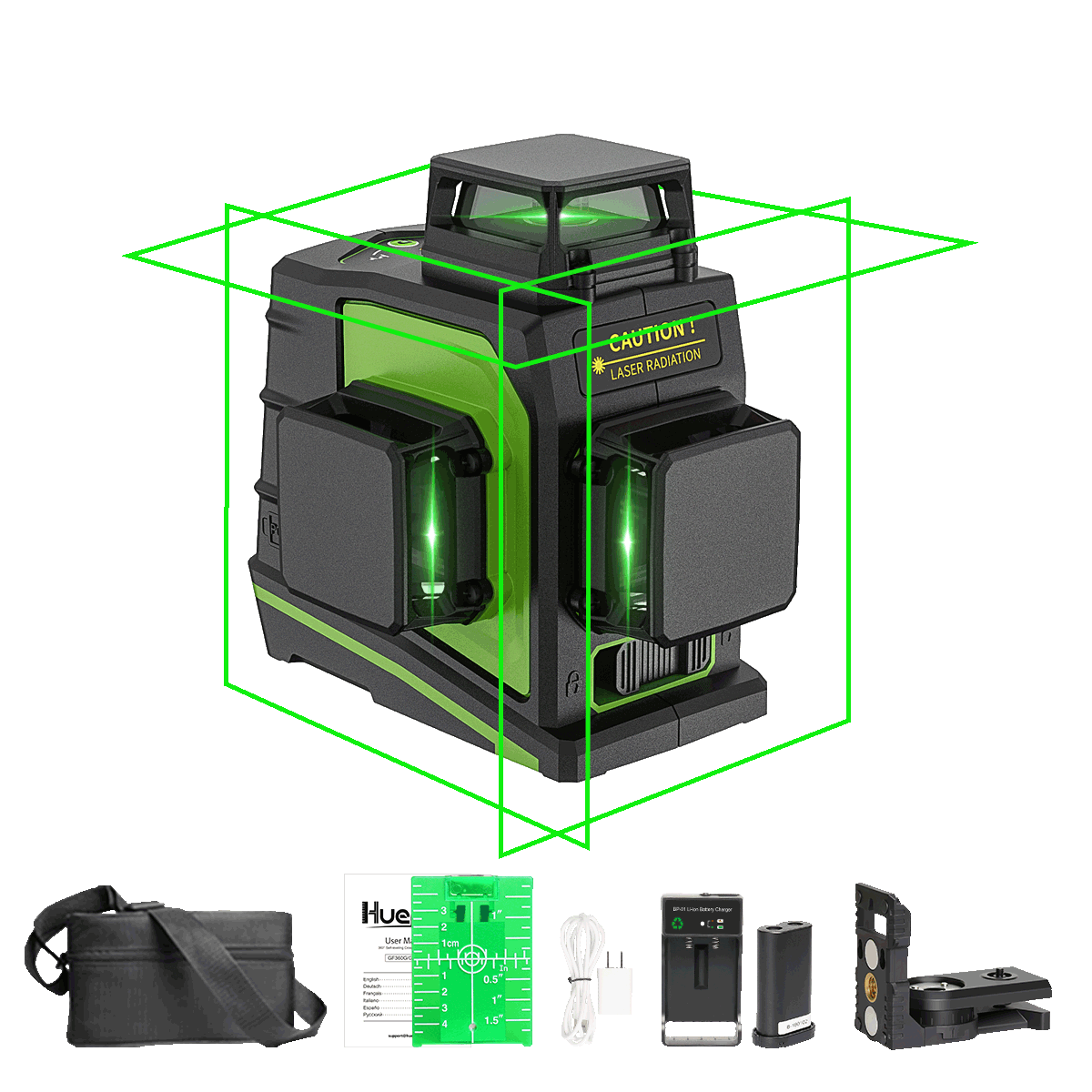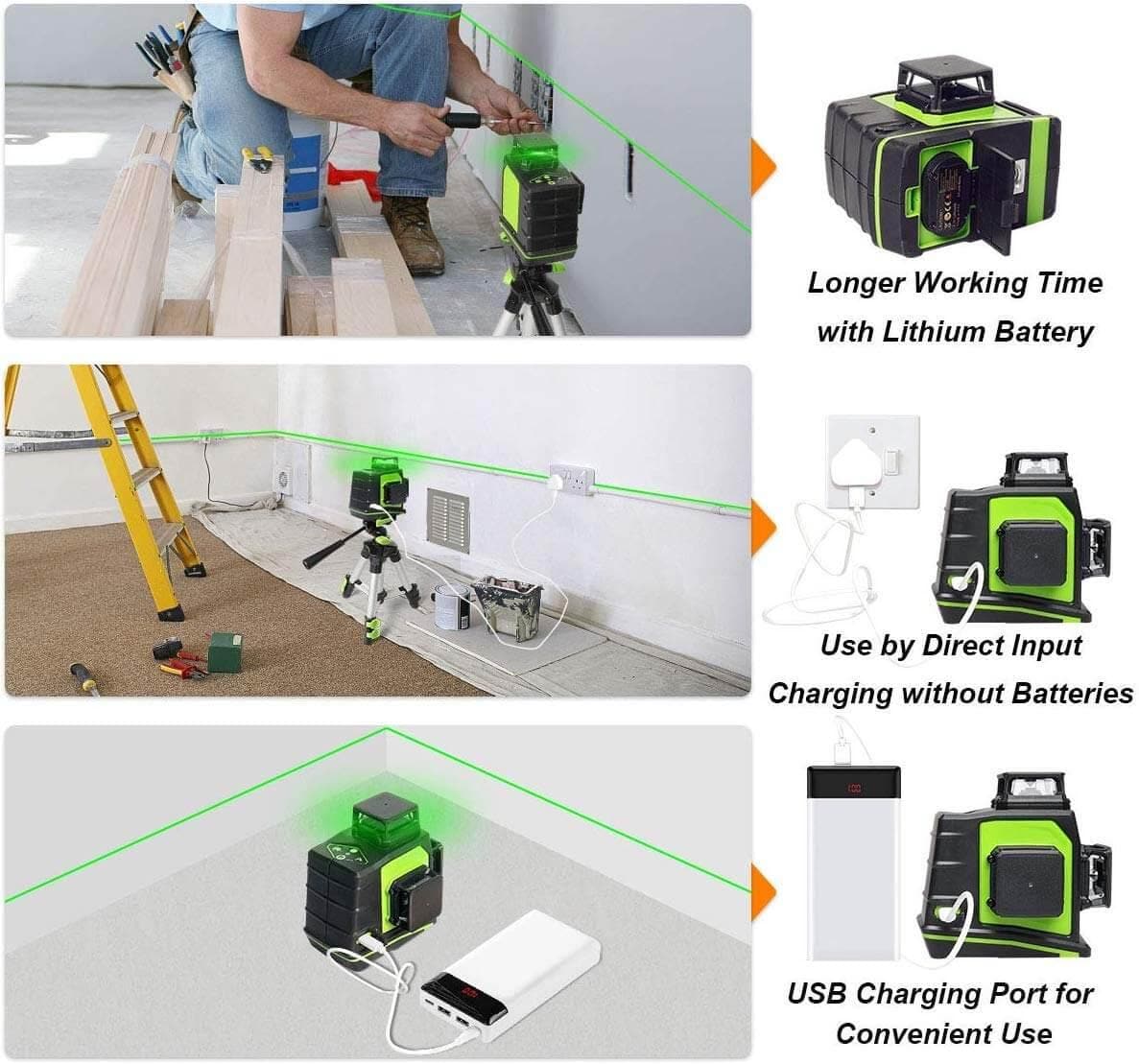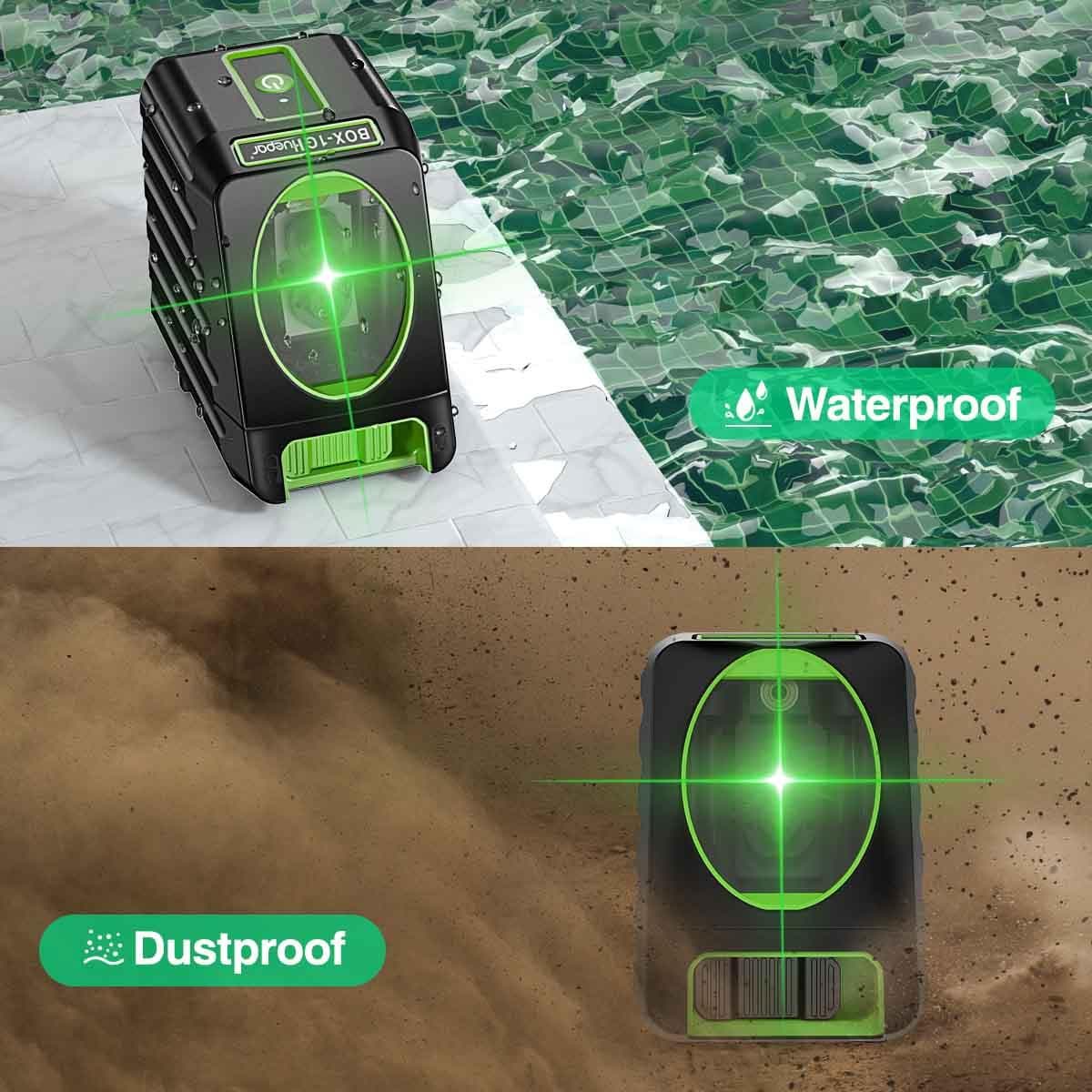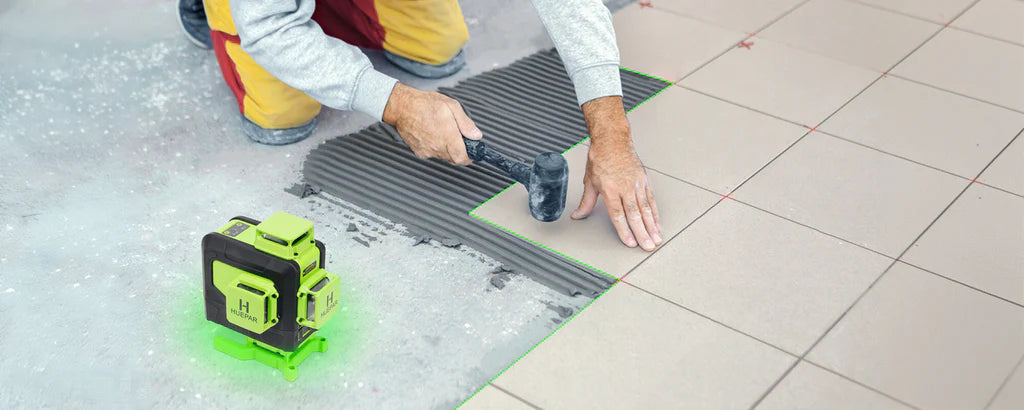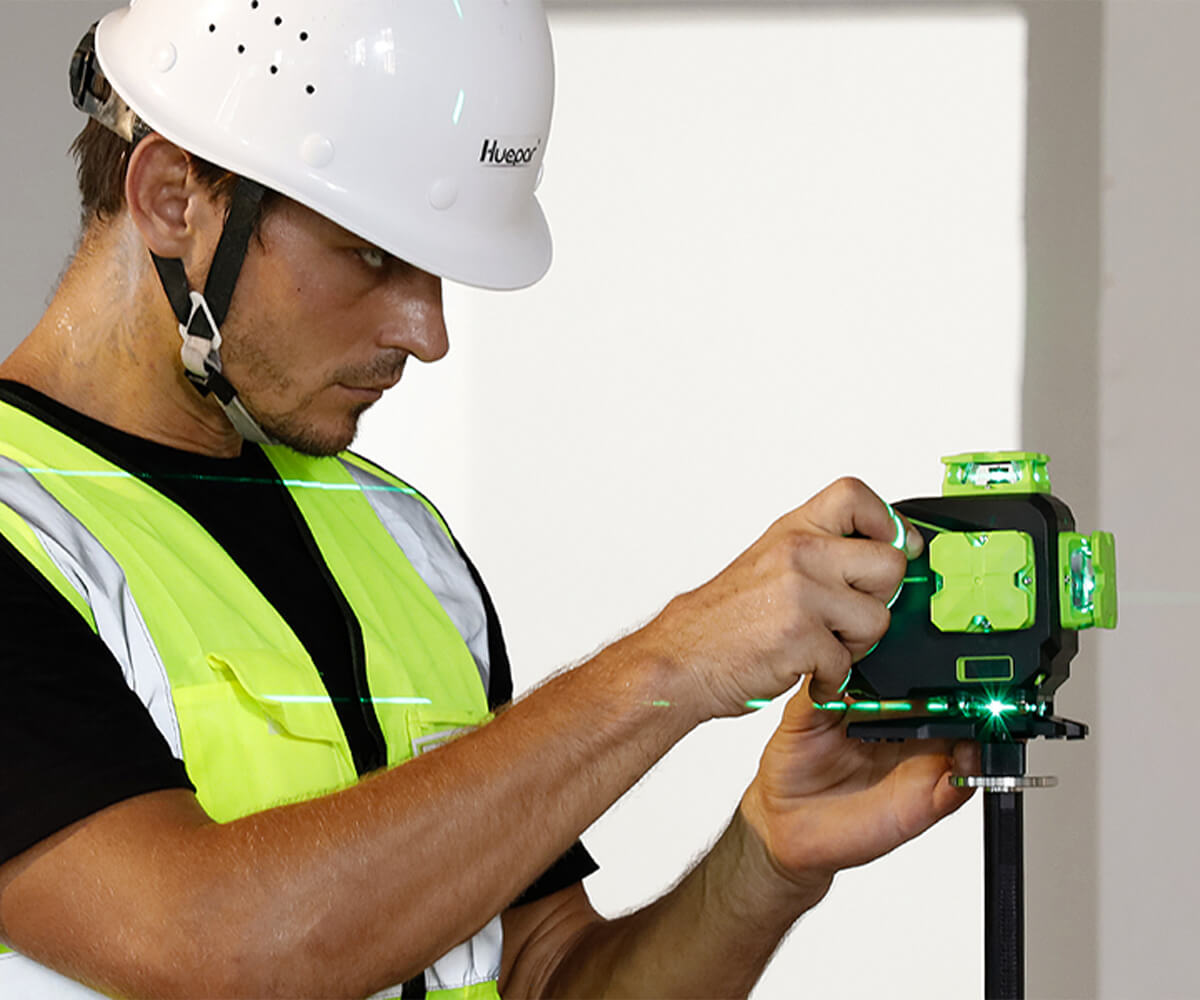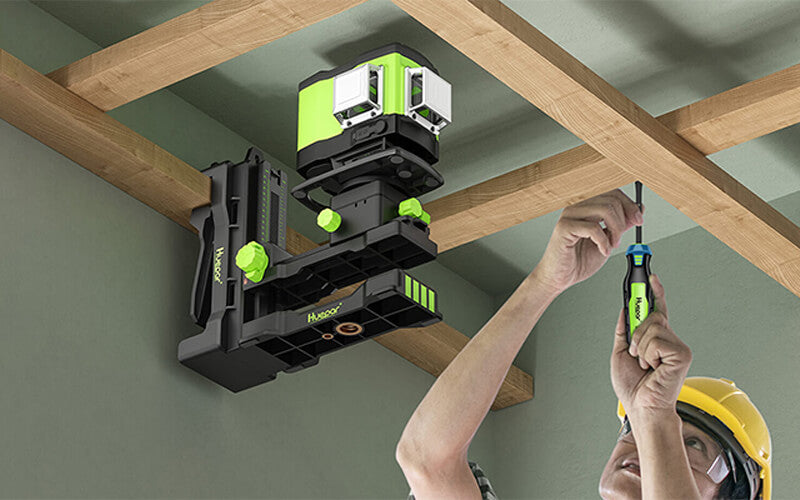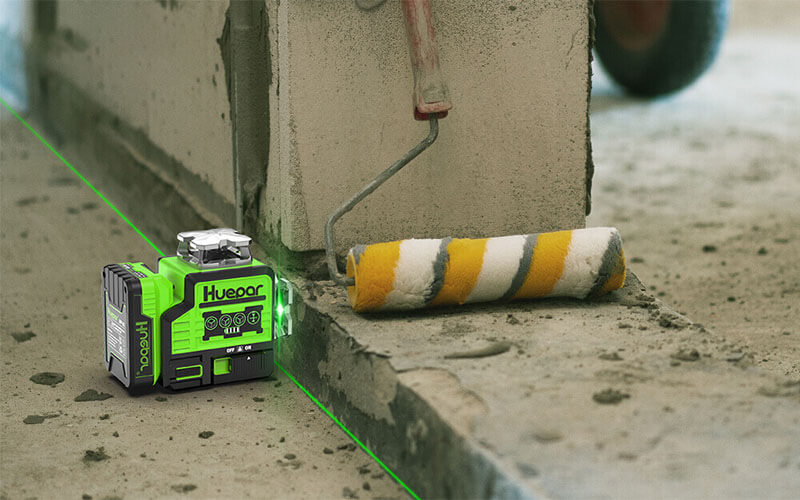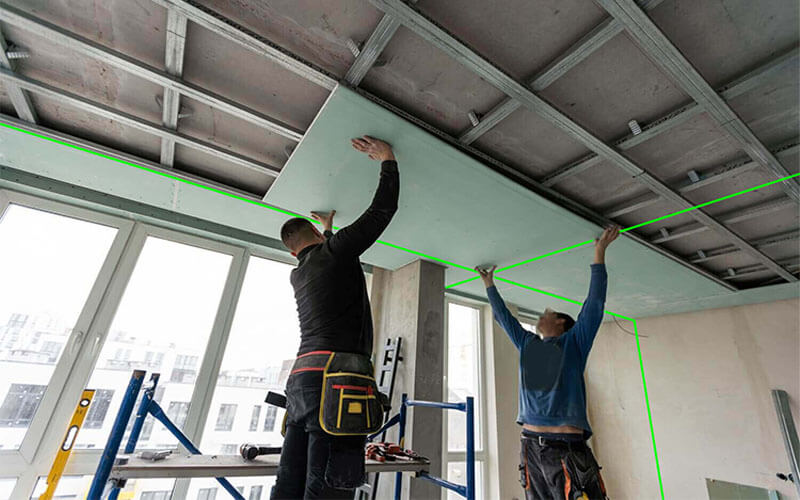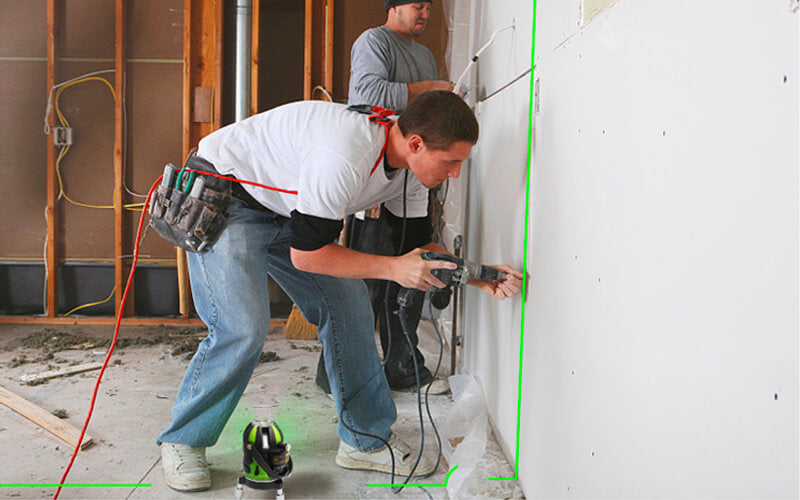
Präzision freisetzen: Ein Leitfaden für 3D-Laser-Wasserwaagen in Bau- und Heimwerkerprojekten
Einführung in Laser-Wasserwaagen
Was sind Laser-Wasserwaagen?
Laser-Wasserwaagen sind Werkzeuge, die eine gerade, ebene Lichtlinie ausstrahlen. Sie helfen Benutzern, Objekte mit großer Präzision auszurichten und zu nivellieren. Diese Geräte projizieren einen Punkt oder eine Linie, die horizontal, vertikal oder beides sein kann. Menschen verwenden Laser-Wasserwaagen im Baugewerbe, in der Zimmerei und bei Heimwerkerprojekten. Durch ihre klare visuelle Führung machen sie Aufgaben wie das Aufhängen von Bildern oder das Verlegen von Fliesen einfacher und genauer.

Die Entwicklung der Laser-Nivelliergeräte: Von 2D zu 4D
Laser-Wasserwaagen haben seit ihrer Einführung eine lange Entwicklung durchgemacht. Wir begannen mit einfachen 2D-Laser-Wasserwaagen. Sie projizierten Linien entlang einer einzigen Ebene. Sie halfen Bauarbeitern und Heimwerkern bei einfachen Aufgaben. Doch mit der Zeit wuchs der Bedarf an fortschrittlicheren Werkzeugen. Hier kommen die 3D-Laser-Wasserwaagen ins Spiel. Sie können Linien auf allen drei X-, Y- und Z-Achsen projizieren. So können Sie komplexe Layouts mit Leichtigkeit bewältigen. Und jetzt erleben wir den Aufstieg der 4D-Laser-Wasserwaagen. Diese Werkzeuge gehen noch einen Schritt weiter. Sie bieten mehr Referenzpunkte und mehr Kontrolle. Dank dieser Fortschritte war es nie einfacher, bei Bau- und Heimwerkerprojekten Präzision zu erreichen.
Die Vorteile der Verwendung von 3D-Lasern im Bau- und Heimwerkerbereich
Verbesserte Genauigkeit und Effizienz
3D-Laserwasserwaagen haben die Art und Weise verändert, wie wir Präzision beim Bauen und Heimwerken sicherstellen. Sie bieten eine klare visuelle Anleitung mit weniger Fehlern und weniger Nacharbeit. Die hellen, gut sichtbaren Linien ermöglichen schnelle und präzise Ausrichtungen und Messungen. Mit 3D-Lasern können Sie Linien auf allen Ebenen gleichzeitig projizieren. Dies ist ein Fortschritt gegenüber herkömmlichen Werkzeugen, bei denen mehr Genauigkeitsprüfungen erforderlich sind. Sie sparen Zeit und Mühe. Aufgaben wie das Anbringen von Fliesen, das Aufhängen von Schränken oder das Aufstellen von Rahmen werden einfacher. Diese Laserwasserwaagen lassen sich auch mit anderen Technologien synchronisieren, um noch bessere Ergebnisse zu erzielen. Kurz gesagt, sie machen die Arbeit schneller, einfacher und genauer.
Vielseitigkeit für verschiedene Projekte
3D-Laserwasserwaagen verändern die Welt der Bau- und Heimwerkerprojekte. Im Gegensatz zu Standardlasern projizieren sie drei Lichtebenen. Dadurch eignen sie sich perfekt für verschiedene Aufgaben. Sie können sie zum Verlegen von Fliesen, zum Einrahmen und für den Möbelbau verwenden. Sie eignen sich auch hervorragend zum Tapezieren oder zum Installieren von Decken und Leuchten. Ihre Fähigkeit, freihändig an einer Oberfläche zu haften, trägt zu ihrer Flexibilität bei. Sie können alleine arbeiten, ohne zusätzliche Hände zu benötigen. Dieses Werkzeug kann an Innen- und Außenbereiche angepasst werden. Das bedeutet mehr Einsatzmöglichkeiten mit nur einem Werkzeug. Diese Art von Vielseitigkeit schätzen sowohl Profis als auch Heimwerker.
Vergleich von 3D-, Kreuzlinien- und 4D-Lasern
Wenn Sie sich für eine Laserwasserwaage entscheiden, ist es wichtig, den Unterschied zwischen 3D-, Kreuzlinien- und 4D-Modellen zu verstehen.
3D-Laserwasserwaagen projizieren Strahlen in drei Ebenen: X , Y und vertikal ( Z ), und sind daher ideal für Aufgaben geeignet, die eine vollständige Raumaufteilung erfordern.
Kreuzlinienlaser erzeugen sich kreuzende horizontale und vertikale Linien. Sie sind einfach zu verwenden und eignen sich gut für die Arbeit an Wänden.
4D-Laserwasserwaagen bieten eine zusätzliche Ebene. Sie decken bei komplexen Projekten alle Richtungen ab.
Hier ist ein kurzer Vergleich:
- 3D- Ebenen ermöglichen eine 360-Grad-Abdeckung eines Raumes.
- Cross Line Modelle sind kostengünstig und für einfachere Aufgaben geeignet.
- 4D- Wasserwaagen bieten eine Rundumabdeckung und eignen sich am besten für komplizierte Designs.
Die Wahl des richtigen Typs hängt von der Komplexität und den Präzisionsanforderungen Ihres Projekts ab.
Praktische Anwendungen von 3D-Lasern
Bewährte Vorgehensweisen für Installation und Kalibrierung
Um das volle Potenzial von 3D-Lasern in Ihren Projekten auszuschöpfen, sind die korrekte Installation und Kalibrierung von entscheidender Bedeutung. Hier ist eine vereinfachte Anleitung, um optimale Leistung sicherzustellen:
- Wählen Sie den richtigen Standort : Suchen Sie zunächst eine stabile Oberfläche. Stellen Sie sicher, dass sie eben ist, um Fehler zu vermeiden.
- Montage des Geräts : Befestigen Sie die 3D-Laserwasserwaage für stabile Projektionen auf einem Stativ oder einer Wandhalterung.
- Einschalten und Ersteinrichtung : Schalten Sie das Gerät ein und lassen Sie es sich selbst nivellieren, wenn es über eine automatische Nivellierungsfunktion verfügt. Wenn nicht, stellen Sie es manuell ein, bis es waagerecht ausgerichtet ist.
- Kalibrierungsprüfung : Befolgen Sie die Anweisungen des Herstellers, um die Kalibrierung zu prüfen und anzupassen. Dadurch wird die Genauigkeit gewährleistet.
- Vor Gebrauch testen : Führen Sie nach der Einstellung einen kurzen Test durch, um sicherzustellen, dass die Laserlinien Ihren Messungen entsprechen.
- Regelmäßige Wartung : Reinigen Sie die Linsen und überprüfen Sie regelmäßig die Kalibrierung. Dadurch bleibt die Präzision erhalten.
Durch Befolgen dieser Schritte stellen Sie sicher, dass die Laserwasserwaage richtig eingestellt ist, um für jedes Projekt genaue Ausrichtungen zu ermöglichen.
Fallstudien: Reale Bau- und Heimwerkerszenarien
- Bei einem Renovierungsprojekt in einem Haus sorgte eine 3D-Laserwasserwaage für die perfekte Ausrichtung der Wandfliesen und verhinderte so kostspielige Fehler.
- Ein Landschaftsbauunternehmen nutzte eine 3D-Laserwasserwaage, um schnell einen ebenen Boden für einen neuen Garten abzustecken und sparte so stundenlanges manuelles Vermessen.
- Beim Bau einer Sondertreppe setzten die Bauunternehmer eine 3D-Laserwasserwaage ein, um eine präzise Platzierung der Setzstufen und Trittstufen zu gewährleisten.
- Ein Heimwerker verwendete beim Einbauen von Schränken eine 3D-Laserwasserwaage, um sicherzustellen, dass diese alle auf der gleichen Höhe und absolut rechtwinklig waren.
- Ein Team, das ein Außendeck baute, verließ sich auf eine 3D-Laserwasserwaage, um Pfosten und Balken präzise auszurichten, was zu einer stabilen, ausgewogenen Struktur führte.
Sicherheitstipps für die Verwendung von Lasernivellieren
Beim Einsatz von 3D-Lasern muss die Sicherheit immer an erster Stelle stehen, um Unfälle zu vermeiden und eine sichere Arbeitsumgebung zu gewährleisten. Hier sind einige wichtige Sicherheitstipps:
- Lesen Sie das Handbuch : Lesen Sie vor der Verwendung einer 3D-Laserwasserwaage die Anweisungen des Herstellers gründlich durch.
- Tragen Sie eine Schutzbrille : Schützen Sie Ihre Augen vor Laserstrahlung, indem Sie eine geeignete Schutzbrille tragen.
- Vermeiden Sie direkten Augenkontakt : Schauen Sie niemals direkt in den Laserstrahl und richten Sie ihn nicht auf andere.
- Vorsicht in der Höhe : Wenn Sie eine Laserwasserwaage in der Höhe verwenden, sichern Sie sie gut, um Stürze zu verhindern.
- Auf Stolperfallen achten : Halten Sie den Bereich frei von losen Kabeln oder Geräten, über die man stolpern könnte.
- Verwendung bei geeigneter Beleuchtung : Betreiben Sie die Laserwasserwaage in gut beleuchteten Bereichen, um die Strahlen leicht zu sehen und Unfälle zu vermeiden.
- Bleiben Sie wachsam : Behalten Sie Ihre Umgebung im Auge, um andere nicht abzulenken oder den Weg des Lasers zu unterbrechen.
- Regelmäßige Wartung : Halten Sie die Laserwasserwaage durch regelmäßige Kontrollen und Reinigungen in gutem Zustand.
- Vorsicht beim Umgang : Gehen Sie behutsam mit der Laserwasserwaage um, um eine Beschädigung der empfindlichen Optik und Mechanik zu vermeiden.
Wenn Sie diese Tipps befolgen, können Sie 3D-Laserwasserwaagen sicher für alle Ihre Bau- und Heimwerkerarbeiten nutzen.


